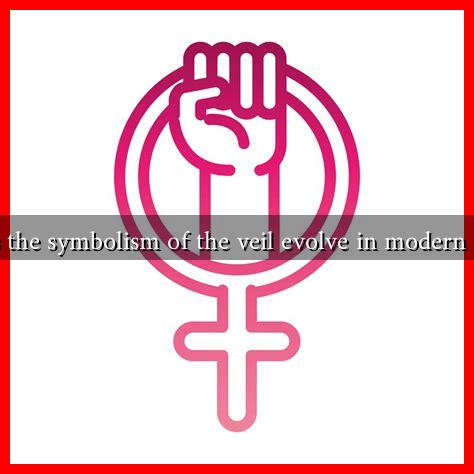-
Table of Contents
How Does the Symbolism of the Veil Evolve in Modern Feminism?
The veil has long been a potent symbol in various cultures, often representing modesty, tradition, and sometimes oppression. In the context of modern feminism, the symbolism of the veil has evolved significantly, reflecting broader discussions about autonomy, identity, and resistance. This article explores how the veil’s meaning has transformed within feminist discourse, highlighting its implications for women’s rights and self-expression.
The Historical Context of the Veil
Historically, the veil has been associated with various cultural and religious practices. In many societies, it has served as a marker of identity and social status. However, it has also been viewed as a symbol of patriarchal control. For instance:
- In Islamic cultures, the hijab and other forms of veiling are often seen as expressions of faith and modesty.
- In Western contexts, the veil has been interpreted as a sign of oppression, particularly in discussions surrounding women’s rights.
These contrasting views have led to a complex relationship between feminism and the veil, with debates often centering on whether it empowers or restricts women.
The Veil as a Symbol of Empowerment
In recent years, many feminists have reinterpreted the veil as a symbol of empowerment rather than oppression. This shift is particularly evident in the works of feminist scholars and activists who argue that the choice to wear a veil can be an assertion of agency. For example:
- Activists like Linda Sarsour advocate for the right of women to choose how they express their identity, including the decision to wear a hijab.
- In her book “Muslim Women in America,” Yvonne Haddad discusses how Muslim women navigate their identities in a post-9/11 world, often using the veil as a means of asserting their presence and challenging stereotypes.
This perspective aligns with the broader feminist principle of bodily autonomy, emphasizing that women should have the right to make choices about their own bodies without external judgment or coercion.
The Veil in Intersectional Feminism
Modern feminism increasingly recognizes the importance of intersectionality—the idea that various social identities (such as race, class, and religion) intersect to create unique experiences of oppression and privilege. The veil serves as a critical focal point in intersectional feminist discussions:
- For many women of color, the veil is intertwined with their cultural identity, making it a powerful symbol of resistance against both racism and sexism.
- Intersectional feminists argue that the veil should not be viewed solely through a Western lens, which often frames it as a symbol of oppression, but rather as a complex expression of identity that varies across different contexts.
By embracing this complexity, modern feminism can better advocate for the rights of all women, recognizing that their experiences and choices are shaped by a multitude of factors.
Case Studies and Real-World Examples
Several case studies illustrate the evolving symbolism of the veil in modern feminism:
- The #FreeTheNipple campaign, which advocates for women’s rights to express their bodies freely, has seen solidarity from women who choose to wear veils, highlighting the shared struggle for bodily autonomy.
- In France, the ban on the hijab in public schools sparked significant protests from Muslim women, who argued that the law infringed on their rights to self-expression and religious freedom.
These examples underscore the importance of understanding the veil as a multifaceted symbol that can represent both oppression and empowerment, depending on the context and the individual’s choice.
Conclusion: The Veil as a Complex Symbol in Feminism
The symbolism of the veil in modern feminism is a testament to the movement’s evolution and its commitment to inclusivity. As discussions around the veil continue to unfold, it becomes clear that:
- The veil can serve as a powerful symbol of empowerment for many women, allowing them to assert their identity and autonomy.
- Intersectional feminism plays a crucial role in understanding the diverse meanings of the veil across different cultures and contexts.
- Ultimately, the choice to wear or not wear a veil should be respected as a personal decision, free from societal judgment.
As feminism progresses, it is essential to embrace the complexities of symbols like the veil, recognizing that they can embody both resistance and empowerment in the ongoing fight for women’s rights. For further reading on this topic, you can explore resources from organizations like Women’s March and Feminist Frequency.


